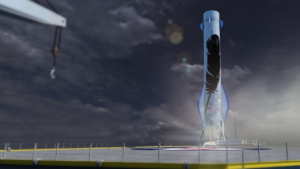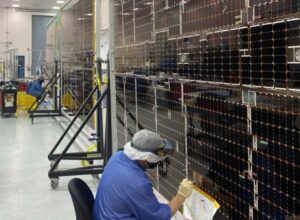
A Closer Look At Firefly Aerospace’s Facilities
Due to the complexity of a single rocket launch, there is a lot of work that goes on behind the scenes in order for a mission to launch and be successful. This large amount of infrastructure is sorted in different categories each with a specific purpose and goal. These same facilities use unique locations and equipment to ensure they are as efficient and cost-effective as possible.
Firefly Aerospace has many different facilities in order to develop, manufacture, and test their Alpha launch vehicle. Some of these main facilities include a headquarters, multiple launch complexes, an integration facility, and more. All of which combine into the backbone of not only each test and launch of Alpha but the company as a whole. If one of these facilities experiences an error then it creates a cascade effect.
Not only do you need facilities and buildings to construct and design launch vehicles such as alpha, but also facilities for mission control and much more. Not to mention rockets are massive and require complicated infrastructure throughout every step of the way. This is exactly why many companies including Firefly Aerospace put a lot of time and effort into their facilities.
Facility Overview

Firefly Aerospace is a private space company currently working on small-lift launch vehicles such as Alpha. The company is headquartered in Austin, Texas, and is committed to providing economical and convenient access to space for small payloads. They are trying to do this through the design, manufacturing process, and operation of reliable launch vehicles. The Firefly team addresses the market’s need for flexible access to space with the simplest and fastest approach to technology selection. To reduce risk and increase reliability, each vehicle is engineered with cross-industry design insights, leveraging high maturity COTS components.
Firefly uses a highly vertically integrated manufacturing process for the majority of the launch vehicle. Propulsion, structures, and avionics are designed, built, and tested in-house, integrating COTS components as required. Firefly has not only put a lot of focus on the launch vehicle and the process of building it but the facilities and buildings that help facilitate a successful rocket company and progression. Firefly understands that in order to consistently develop, manufacture, and test complicated pieces of technology and engineering such as a rocket, they need to put a similar amount of effort into the various infrastructure. That is exactly what Firefly has and is continuing to do through different buildings and facilities.
Different Facilities

Headquarters & Test Facility – The first important facility that Firefly needs to keep day-to-day operations going is the HQ. Firefly’s corporate office or headquarters is in Cedar Park, Texas. It is an open engineering environment that is meant to encourage collaboration among other things. The headquarters also houses the main Mission Control Center or MCC, where major stage tests, operations, and launches can be monitored and supported. The headquarters of a rocket company often play a very important role in a lot of the behind-the-scenes work on the technical side of each launch and test. Without them, it would be very difficult or even impossible to test and work on different parts of the rocket. This area also helps provide critical information during whichever test or mission. This same information is used to fix problems or upgrade certain parts of the launch vehicle and more.
Next, you have the production and test facilities. Propulsion and structural production and testing are conducted in Briggs, Texas, at a 200-acre test facility 30 minutes north of Firefly Headquarters. The test site is fully staffed and incorporates multiple facilities including a 10,000 square foot test control and fabrication building, a 2,500 square foot surface finish shop, and a 30,000 square foot production shop. The site also includes several operational test stands for engine testing, component testing, and integrated stage testing. Due to rockets’ large size and power, these test facilities and buildings are both massive, and very strong. In order to withstand the immense force put on them in tests such as an engine fire, they are very well built. They also need to be far away from practically anything to ensure everyone stays safe.
Launch Complexes – Another vital piece of infrastructure to any rocket company are launch complexes. Firefly launch sites provide customers with a wide range of orbit options to fit mission objectives. Each facility supports both dedicated and multiple manifest missions. The first is SLC-2, at Vandenberg Air Force Base. Firefly conducts Polar and SSO launches to high inclinations from this launch complex at Vandenberg AFB, California. Its location on the west coast of the United States provides unique launch opportunities for the company. This location offers orbital inclinations ranging from 56 to 104 degrees.
Next is SLC-20, located in Cape Canaveral Air Force Station. This site is an established launch complex located at Cape Canaveral Air Force Station in Florida. Located on the east coast of the United States, it offers inclinations ranging from 29 to 57 degrees. These two different options across the United States mean Firefly Aerospace can offer a lot more options to different customers depending on what they are looking for. Launch site locations are often very interesting and unique due to their very large impact on the possibilities for a launch vehicle. Even the distance from the equator has a big impact when launching rockets.
Integration & Payload Processing Facility – Finally you have multiple facilities that are the backbone to preparing and launching a rocket. Starting with the Horizontal Integration Facility or HIF. This on-site facility is being utilized for processing and integration of Firefly launch vehicle stage. The HIF is also where the integrated PLF or payload fairing will be mated to the launch vehicle. The HIF is climate controlled and provides power and high-pressure gases used for processing Alpha LVs. The Horizontal Integration Facility is a 5,000 square foot open high bay, with an eave height of 25 feet, allowing for the removal of Alpha components from shipping fixtures located on flatbed transportation trailers with deck heights up to 58 inches. Two bridge cranes in the high bay support processing and operations. Multiple engineering workstations, administrative space, and communications equipment rooms are provided.
Lastly, you have the Payload Processing Facility. The PPF provides controlled environmental space and equipment for payload processing and encapsulation with a high bay, an airlock, agrament room, and office space. The PPF high bay is a climate-controlled ISO 8 Class 100k cleanroom. Ancillary rooms are made sure to be visibly clean, air-conditioned, and humidity-controlled workspaces. In addition to this, the rooms provide consistent available power for processing and more. Additional power and gasses can be made available on a mission unique basis with the customer.
Conclusion
Rocket companies, missions, and launches specifically are very complicated processes. This requires a lot of work not only on the front end but behind the scenes as well. This is where you will find a large number of facilities and launch complexes located around the country helping facilitate missions and goals. Firefly Aerospace is no exception and uses multiple facilities including a headquarters, test facilities, launch complexes, integration facilities, and more. All of which combine and work together to develop, manufacture, and test every part of a rocket. While still relatively new, Firefly Aerospace is making great progress. We will have to wait and see how the company progresses and the impact they have on the space industry.



